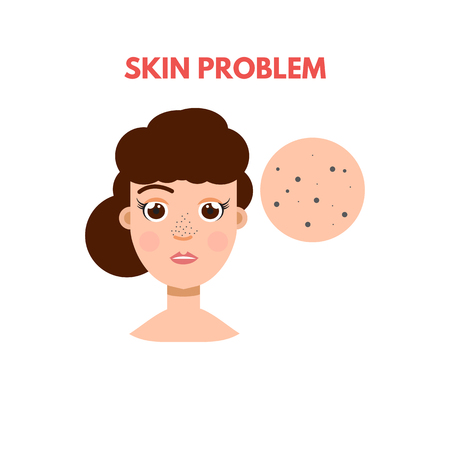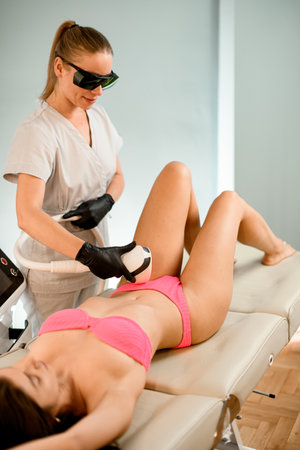Introduction to Laser Hair Removal
Laser hair removal has rapidly become one of the most sought-after cosmetic treatments in the UK, offering a modern alternative to traditional methods such as shaving, waxing, and epilation. As British men and women increasingly seek long-lasting solutions for unwanted hair, laser technology stands out for its precision and effectiveness. Unlike temporary hair removal options, laser treatment targets hair at the root, resulting in smoother skin and significantly reducing regrowth over time. The appeal lies not only in its efficiency but also in the convenience it offers—minimising the need for frequent maintenance and reducing the risk of irritation often associated with other techniques. With advancements in technology and a growing number of clinics across the country, laser hair removal is now more accessible than ever, providing people across the UK with a reliable route to confidence and comfort in their own skin.
2. The Science Behind the Technology
Laser hair removal is grounded in advanced scientific principles, making it one of the most reliable methods for achieving long-term hair reduction. At its core, the technology utilises concentrated beams of light—lasers—that are finely tuned to target specific structures within the skin. The primary target is the hair follicle, which is responsible for producing new hair growth.
How Laser Devices Target Hair Follicles
When a laser device is applied to the skin, it emits a specific wavelength of light that passes harmlessly through the outer layers of the skin and is absorbed by the pigment (melanin) present in the hair shaft and follicle. The absorbed energy is then converted into heat, which damages the follicle and impedes its ability to produce new hair.
The Role of Melanin
Melanin plays a critical role in this process. It is the natural pigment that gives hair and skin their colour. Because lasers are attracted to melanin, they selectively target darker hair while leaving surrounding skin tissue largely unaffected. This selectivity makes laser hair removal particularly effective for individuals with lighter skin and darker hair, though advancements in technology are making it increasingly suitable for a wider range of skin types.
Why Lasers Are Effective for Long-Term Reduction
The effectiveness of laser hair removal lies in its ability to disrupt the growth cycle of hair follicles. Hair grows in several stages: anagen (active growth), catagen (transitional), and telogen (resting). Lasers are most effective during the anagen phase when the follicle contains the highest amount of melanin. Multiple sessions are typically required because not all hairs are in the same stage at any given time, ensuring more comprehensive results over time.
| Aspect | Laser Hair Removal | Traditional Methods (Shaving/Waxing) |
|---|---|---|
| Target | Hair follicle (melanin) | Hair shaft above skin |
| Longevity | Long-term reduction | Short-term removal |
| Suitability | Darker hair/lighter skin (best), but improving for others | All types |
| Pain Level | Mild discomfort (varies) | Mild to moderate (varies) |
This science-backed approach makes laser hair removal a popular choice across the UK, offering both precision and lasting results compared to traditional techniques.

3. What to Expect During Treatment
Step-by-Step Walk-Through of the Laser Hair Removal Process
Laser hair removal is a straightforward procedure that is both clinically effective and widely practised across the UK. Understanding what happens at each stage can help you feel more at ease before your first session.
Preparation Before Your Appointment
Prior to arriving at the clinic, you will typically be advised to shave the area being treated within 24 hours of your appointment. Avoid waxing, plucking, or bleaching hair, as these can reduce the effectiveness of the laser. Most British clinics also recommend steering clear of sunbeds and fake tan for several weeks before treatment, as tanned skin can increase the risk of side effects.
Arrival and Consultation
On arrival, a qualified practitioner will conduct a brief consultation if it’s your first visit. This includes a patch test to check for any adverse reactions and a discussion about your medical history. The practitioner will then cleanse the treatment area to ensure optimal results.
The Treatment Experience: What Does It Feel Like?
During the procedure, you’ll be asked to wear protective goggles. The practitioner will use a handheld device that emits concentrated light pulses onto your skin. Many British clients describe the sensation as similar to an elastic band snapping against the skin—noticeable but generally tolerable. Some devices are equipped with cooling technology to minimise discomfort.
The Typical Session Duration and Setting
Treatment times can vary: smaller areas like the upper lip may take just 10 minutes, while larger areas such as legs or back might require up to an hour. Most clinics in the UK pride themselves on maintaining a calm, professional environment, ensuring you feel comfortable throughout.
What British Clients Commonly Experience
It’s normal for clients in Britain to feel mild redness or warmth in the treated area post-session, akin to mild sunburn. Clinics usually provide aftercare advice and recommend avoiding hot showers, saunas, or intensive exercise for 24 hours following treatment. Multiple sessions are standard—usually spaced four to six weeks apart—to achieve optimum results due to varying hair growth cycles.
4. Safety, Suitability, and Skin Types
When considering laser hair removal in the UK, safety and suitability are of utmost importance. Treatments are regulated by strict standards set by the Care Quality Commission (CQC) and other relevant authorities to ensure client protection and optimal results. Practitioners must adhere to guidelines regarding equipment maintenance, staff training, and hygiene protocols.
UK Safety Standards for Laser Hair Removal
In the UK, laser hair removal clinics are required to use only CE-marked devices, which guarantees compliance with European health, safety, and environmental protection standards. Technicians must be adequately trained and certified to operate these devices. Before treatment begins, a comprehensive consultation—including a patch test—is performed to assess your skin’s reaction and identify any contraindications.
Skin and Hair Types Most Suitable for Laser Hair Removal
The effectiveness of laser hair removal largely depends on the contrast between skin and hair colour. Traditionally, individuals with fair skin (Fitzpatrick skin types I-III) and dark, coarse hair achieve the best outcomes due to the laser’s ability to target melanin in the hair follicle. However, advancements in technology have made it safer and more effective for a wider range of skin tones.
| Fitzpatrick Skin Type | Description | Laser Suitability |
|---|---|---|
| I-II | Very fair to fair skin; burns easily | Highly suitable; excellent results |
| III-IV | Medium to olive skin; sometimes burns, gradually tans | Suitable with appropriate settings and technology |
| V-VI | Darker brown to black skin; rarely burns, deeply pigmented | Specialist lasers (e.g., Nd:YAG) recommended; practitioner expertise essential |
Risk Minimisation Measures in UK Clinics
To minimise risks such as burns, pigmentation changes, or scarring, UK clinics follow a range of precautionary measures:
- Pretreatment Assessment: Patch tests are conducted on a small area to check for adverse reactions.
- Personalised Settings: Lasers are calibrated according to your unique skin type and hair characteristics.
- Protective Eyewear: Both client and practitioner wear approved eye protection during every session.
- Aftercare Guidance: Comprehensive aftercare instructions help reduce irritation and promote safe healing.
- Regulated Environment: Treatments take place in clean, controlled environments compliant with CQC regulations.
5. Results and Aftercare Guidance
Laser hair removal offers a gradual reduction in unwanted hair, but it is essential to approach the process with realistic expectations. Most individuals in the UK will require between six and eight sessions for optimal results, as hair grows in cycles and lasers are most effective during the active growth phase. After a complete course, many clients experience a significant decrease in hair density and finer regrowth; however, occasional top-up treatments may be needed to maintain smoothness over time.
What Results Can You Expect?
It is important to understand that laser hair removal rarely results in permanent removal of all hair. Instead, you can expect a substantial reduction—often up to 80-90%—in targeted areas. Individual outcomes vary based on factors such as skin tone, hair colour, and hormonal influences. Those with fair skin and dark hair typically see the best results due to the contrast that allows the laser to effectively target pigment in the hair follicle.
Number of Sessions Required
The number of sessions required depends largely on the treatment area and individual response. Facial areas may require more frequent visits spaced four weeks apart, while body areas might need appointments every six to eight weeks. UK practitioners will tailor your treatment plan based on your unique characteristics and goals.
Aftercare: Protecting Your Skin Post-Treatment
Proper aftercare is crucial for safe healing and optimal results. Immediately after each session, you might notice mild redness or swelling similar to a light sunburn—this is completely normal and usually subsides within 24-48 hours. To soothe treated areas, practitioners in the UK often recommend applying a cool compress or aloe vera gel. Avoid hot showers, saunas, and vigorous exercise for at least 24 hours post-treatment to prevent irritation.
Recommended Skin Care Practices
UK experts consistently advise using a broad-spectrum SPF 30 or higher on exposed areas following laser treatment, as your skin becomes more sensitive to UV rays. Refrain from waxing, plucking, or threading between sessions, as these methods can disrupt the hair follicle targeted by the laser. Instead, shaving is generally permitted. If you experience any unexpected reactions or discomfort beyond mild redness or swelling, consult your practitioner promptly for guidance.
By following these aftercare protocols and maintaining open communication with your UK-based laser specialist, you can maximise both safety and satisfaction throughout your laser hair removal journey.
6. Costs, Regulations, and Choosing a Clinic
When considering laser hair removal in the UK, it’s important to understand the typical costs, regulatory environment, and how to select a reputable clinic. While prices can vary based on location, treatment area size, and the technology used, most clinics charge between £40 and £400 per session. Larger areas such as legs or backs are naturally more expensive than smaller areas like the upper lip or underarms. Many providers offer package deals for multiple sessions, which can help manage overall expenses.
Understanding UK Regulations
The UK has specific regulations governing laser hair removal clinics to ensure patient safety and quality standards. In England, facilities offering laser treatments must be registered with the Care Quality Commission (CQC) if they provide medical treatments using lasers. Scotland and Wales have their own registration requirements through Healthcare Improvement Scotland (HIS) and Healthcare Inspectorate Wales (HIW), respectively. These regulatory bodies regularly inspect clinics for cleanliness, staff qualifications, equipment maintenance, and adherence to safety protocols.
What Accreditation Means for You
Accreditation from recognised organisations—such as the British Medical Laser Association (BMLA) or relevant local authorities—indicates that a clinic meets strict professional and ethical standards. Always check that practitioners are trained and certified to operate laser devices safely. It’s wise to ask about the practitioner’s experience and whether they keep up with ongoing professional development in this rapidly evolving field.
Tips for Selecting an Accredited Provider
When choosing a clinic, prioritise those with transparent pricing structures, clear information on treatment plans, and visible evidence of regulatory compliance. Look for clinics that offer thorough consultations before commencing treatment; this is an opportunity to discuss your goals, assess your suitability, and ask about potential risks or side effects. Reading recent reviews from other clients can also provide insight into the quality of care you can expect.
By understanding typical costs, familiarising yourself with the UK’s robust regulatory framework, and taking care to select an accredited provider, you can confidently pursue safe and effective laser hair removal tailored to your needs.


